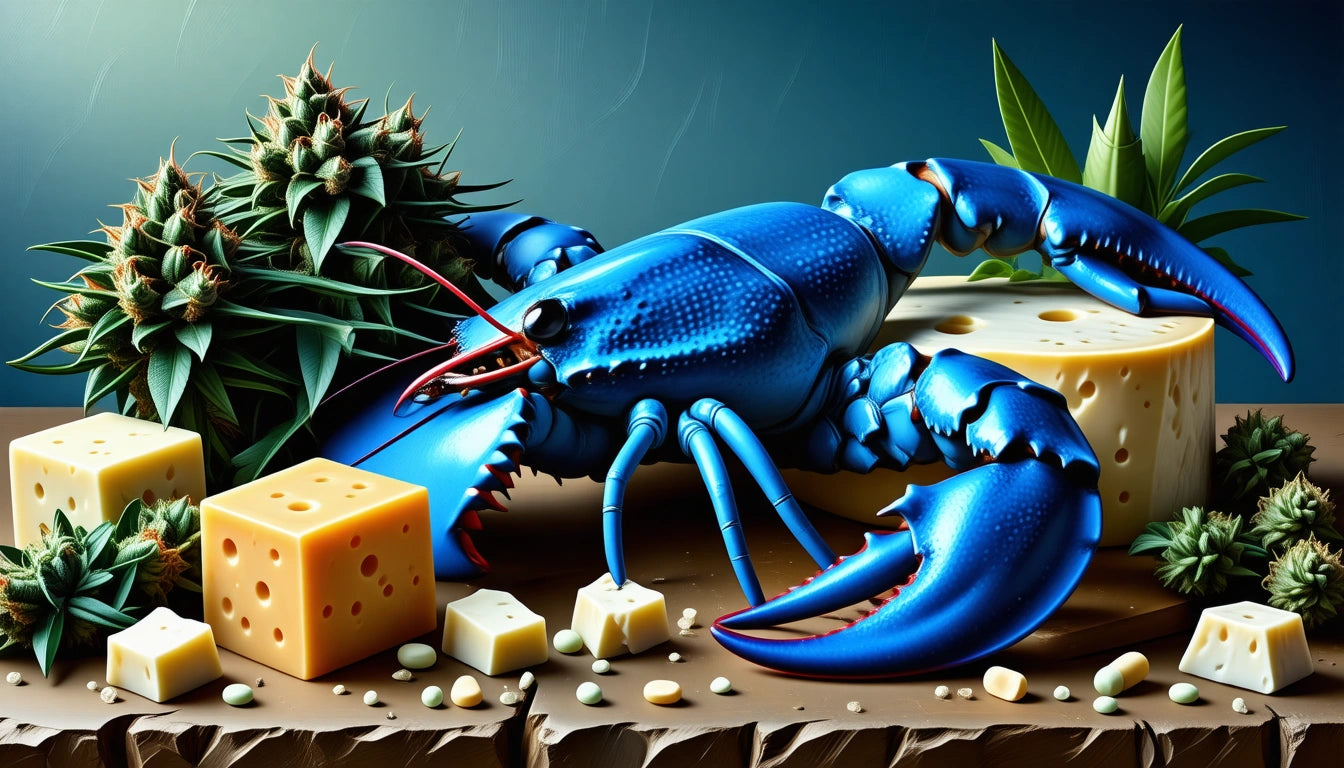Table of Contents
- Understanding Indica vs. Sativa: Beyond Simple Classification
- Blue Lobster Strain: Indica or Sativa Dominant?
- Blue Cheese Strain: Indica-Dominant Genetics and Effects
- The Cheese Strain Family: Predominantly Indica Genetics
- Terpene Profiles and Their Impact on Effects
- Consumption Safety and Proper Storage Considerations
Indica vs. Sativa: Exploring the Blue Lobster and Cheese Cannabis Strains
Cannabis consumers often begin their strain selection process by asking a fundamental question: is this an indica or sativa? When it comes to specialized strains like Blue Lobster and various Cheese varieties, understanding their genetic makeup helps predict their effects and medicinal benefits. This guide explores whether the blue lobster strain is indica or sativa, examines the blue cheese strain's classification, and analyzes the cheese strain family's indica or sativa characteristics.
Understanding Indica vs. Sativa: Beyond Simple Classification
The traditional indica-sativa framework provides a starting point for understanding cannabis effects, but modern science reveals a more complex reality. As explained in this comprehensive guide on indica and sativa characteristics, the distinction goes beyond physical appearance to encompass chemical profiles and subjective effects.
Typically, indicas are associated with:
- Full-body relaxation and sedation
- Pain relief and muscle relaxation
- Evening or nighttime use
- Higher CBD:THC ratios in some varieties
Sativas generally produce:
- Cerebral, energizing effects
- Enhanced creativity and focus
- Daytime functionality
- Higher THC:CBD ratios in many varieties
Most modern strains, including Blue Lobster and Cheese varieties, are hybrids containing genetics from both classifications, though they typically lean toward one end of the spectrum.
Blue Lobster Strain: Indica or Sativa Dominant?
The Blue Lobster strain is predominantly indica-dominant, typically featuring a 70/30 indica-to-sativa ratio. This relatively rare strain combines genetics from Blue Monster and an undisclosed lobster-named variety, resulting in its distinctive characteristics.
Users report that Blue Lobster delivers:
- Moderate to high THC content (usually 18-22%)
- A relaxing body high with mild cerebral effects
- Potential therapeutic benefits for pain and insomnia
- A distinctive aroma blending berry notes with earthy undertones
According to this analysis of popular strain characteristics, Blue Lobster's effects align with typical indica properties while offering some of the mental clarity associated with sativa varieties.
Blue Cheese Strain: Indica-Dominant Genetics and Effects
The blue cheese strain is definitively indica-dominant, typically presenting an 80/20 indica-to-sativa ratio. Created by crossing Blueberry (a classic indica) with UK Cheese, this strain inherits strong indica characteristics while maintaining some sativa elements.
Blue Cheese typically features:
- THC levels ranging from 15-20%
- A distinctive cheese aroma with sweet berry undertones
- Strong physical relaxation effects
- Potential medical applications for anxiety, pain, and insomnia
The comprehensive guide on understanding cannabis strains confirms that Blue Cheese exemplifies many classic indica traits while offering a unique terpene profile that distinguishes it from other indica-dominant varieties.
The Cheese Strain Family: Predominantly Indica Genetics
The original Cheese strain and most of its derivatives are predominantly indica in nature. The cheese strain family traces its origins to a unique phenotype of Skunk #1 discovered in the United Kingdom in the 1980s. This phenotype exhibited a distinctive cheese-like aroma and pronounced indica effects.
Key members of the cheese strain family include:
- UK Cheese (the original, indica-dominant)
- Blue Cheese (indica-dominant hybrid)
- Cheese Quake (indica-leaning hybrid)
- Big Buddha Cheese (slightly more balanced hybrid)
As detailed in this exploration of strain origins, the cheese family maintains consistent indica characteristics across most variations, with only a few exceptions that incorporate stronger sativa genetics.
Terpene Profiles and Their Impact on Effects
Beyond the indica-sativa classification, terpene profiles significantly influence a strain's effects. Blue Lobster and Cheese varieties contain distinct terpene combinations that contribute to their unique experiences.
Common terpenes in these strains include:
- Myrcene: Contributes to the sedative, relaxing effects
- Limonene: Adds citrus notes and potential mood elevation
- Caryophyllene: Provides spicy notes and anti-inflammatory properties
- Humulene: Contributes to the earthy, cheesy aroma
Understanding these terpene profiles helps explain why two indica-dominant strains might produce noticeably different effects, as explored in this analysis of popular cannabis varieties.
Consumption Safety and Proper Storage Considerations
Regardless of whether you're consuming indica-dominant Blue Lobster or Blue Cheese strains, proper storage and safety considerations are essential. Cannabis products should be kept in appropriate containers that prevent degradation while ensuring they remain inaccessible to children.
Industry regulations have established stringent safety standards for cannabis packaging similar to those used for pharmaceuticals and hazardous household products. These measures help prevent accidental ingestion by children while maintaining product integrity.
For optimal preservation of these strains' unique properties:
- Store in airtight, UV-resistant containers
- Maintain consistent temperature and humidity levels
- Keep away from direct light and heat sources
- Ensure all products are in child-resistant packaging when not in use
Future of Strain Classification Beyond Indica and Sativa
The cannabis industry is gradually moving beyond simple indica-sativa classifications toward more nuanced categorization systems based on cannabinoid and terpene profiles. This evolution promises more predictable and personalized experiences for consumers of strains like Blue Lobster and Blue Cheese.
Future classification approaches may include:
- Chemotype profiling based on dominant cannabinoids
- Terpene-based classification systems
- Effect-based categorization (relaxing, energizing, creative, etc.)
- Therapeutic application groupings
While the indica-sativa framework provides a useful starting point, understanding the specific characteristics of strains like Blue Lobster and various Cheese varieties requires looking beyond these broad categories to their unique genetic and chemical compositions.











Leave a comment
All comments are moderated before being published.
This site is protected by hCaptcha and the hCaptcha Privacy Policy and Terms of Service apply.